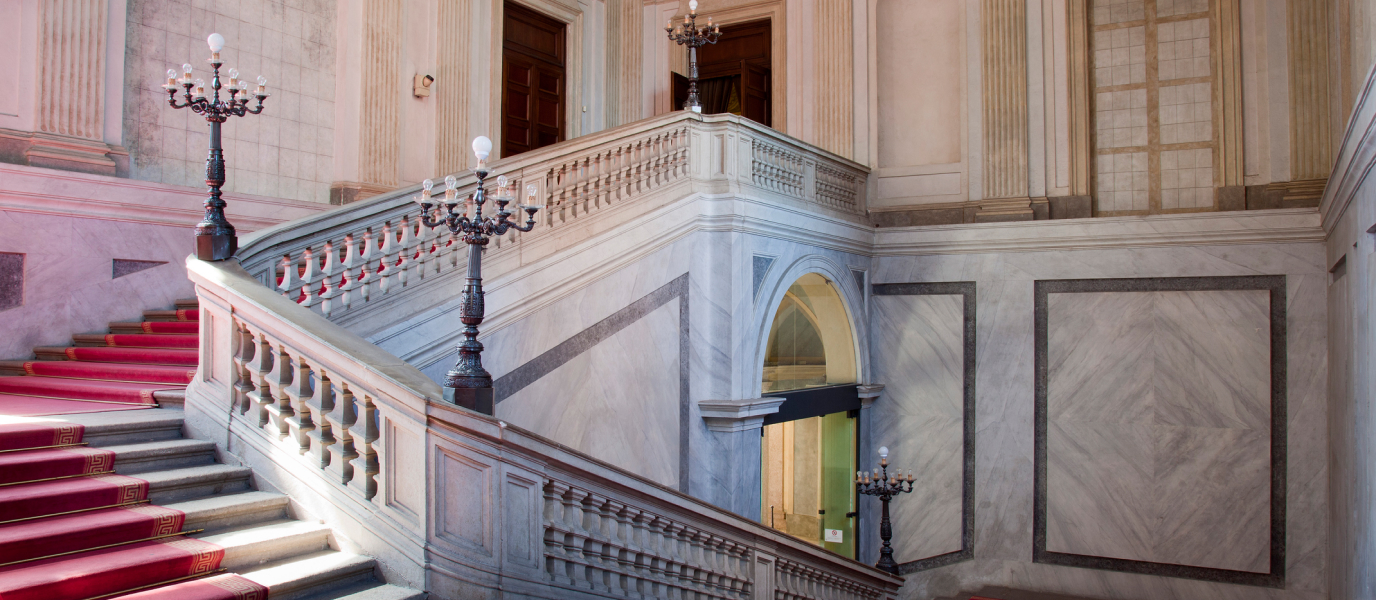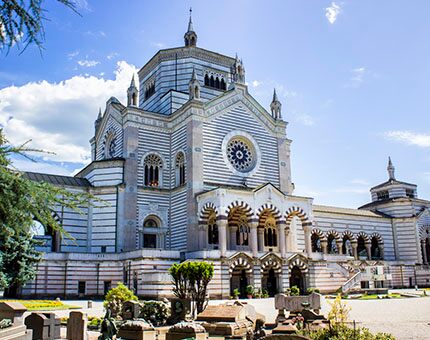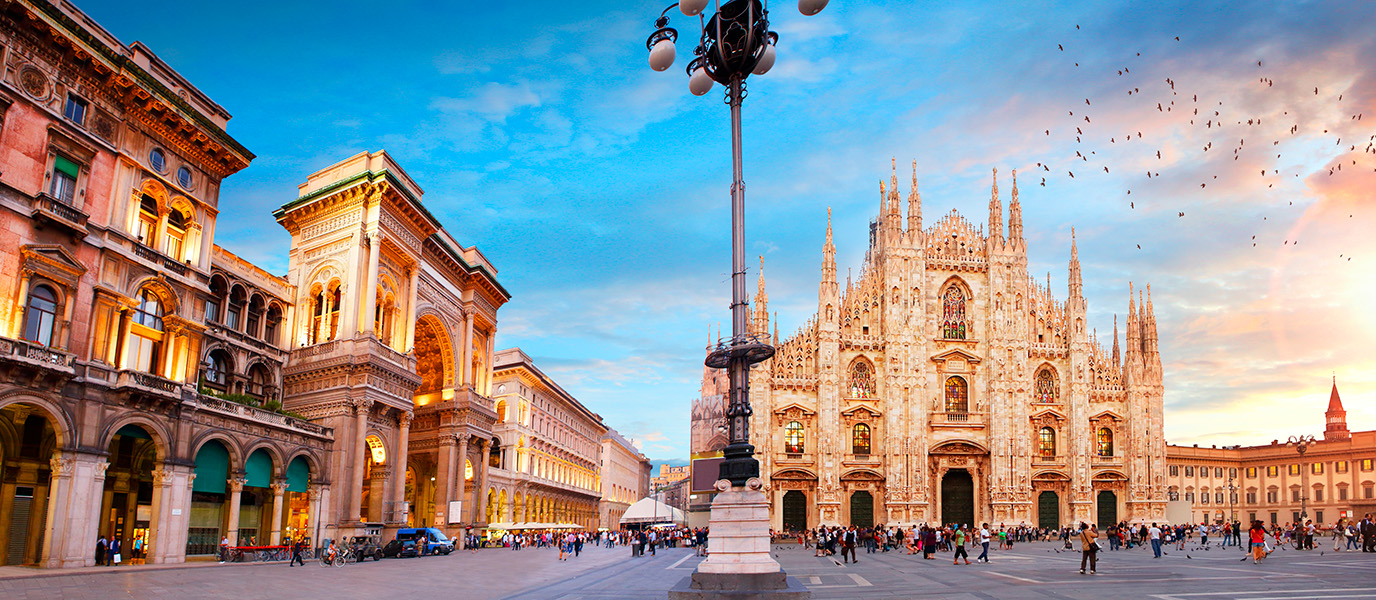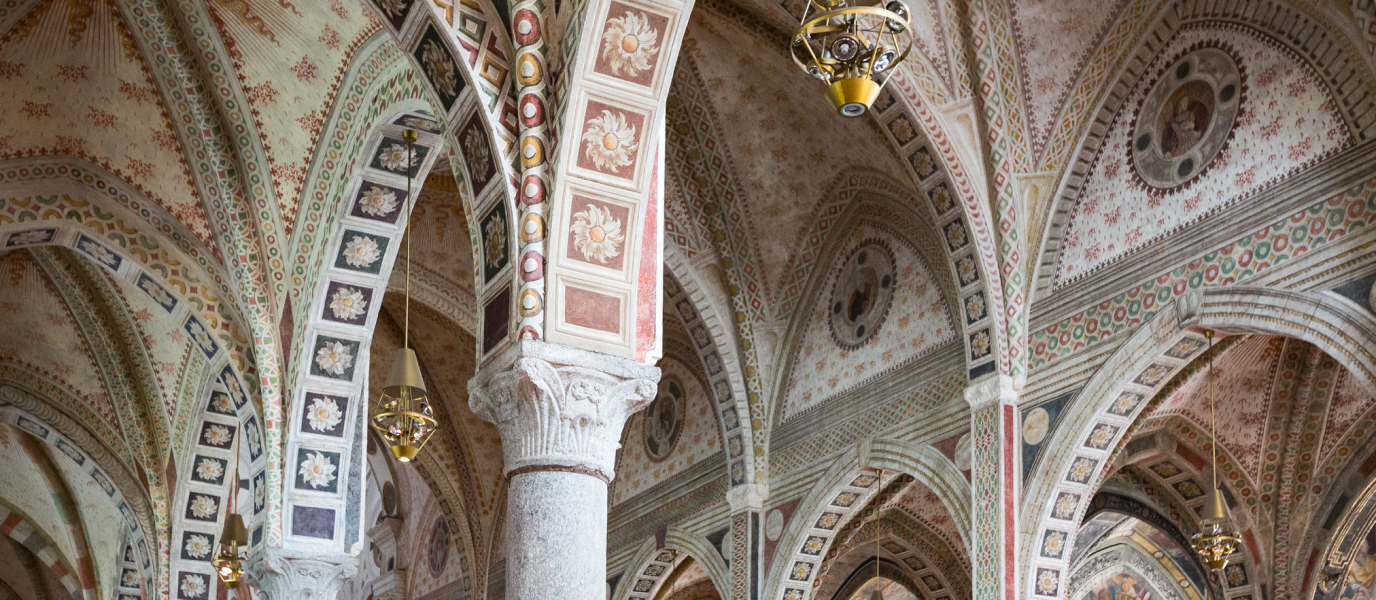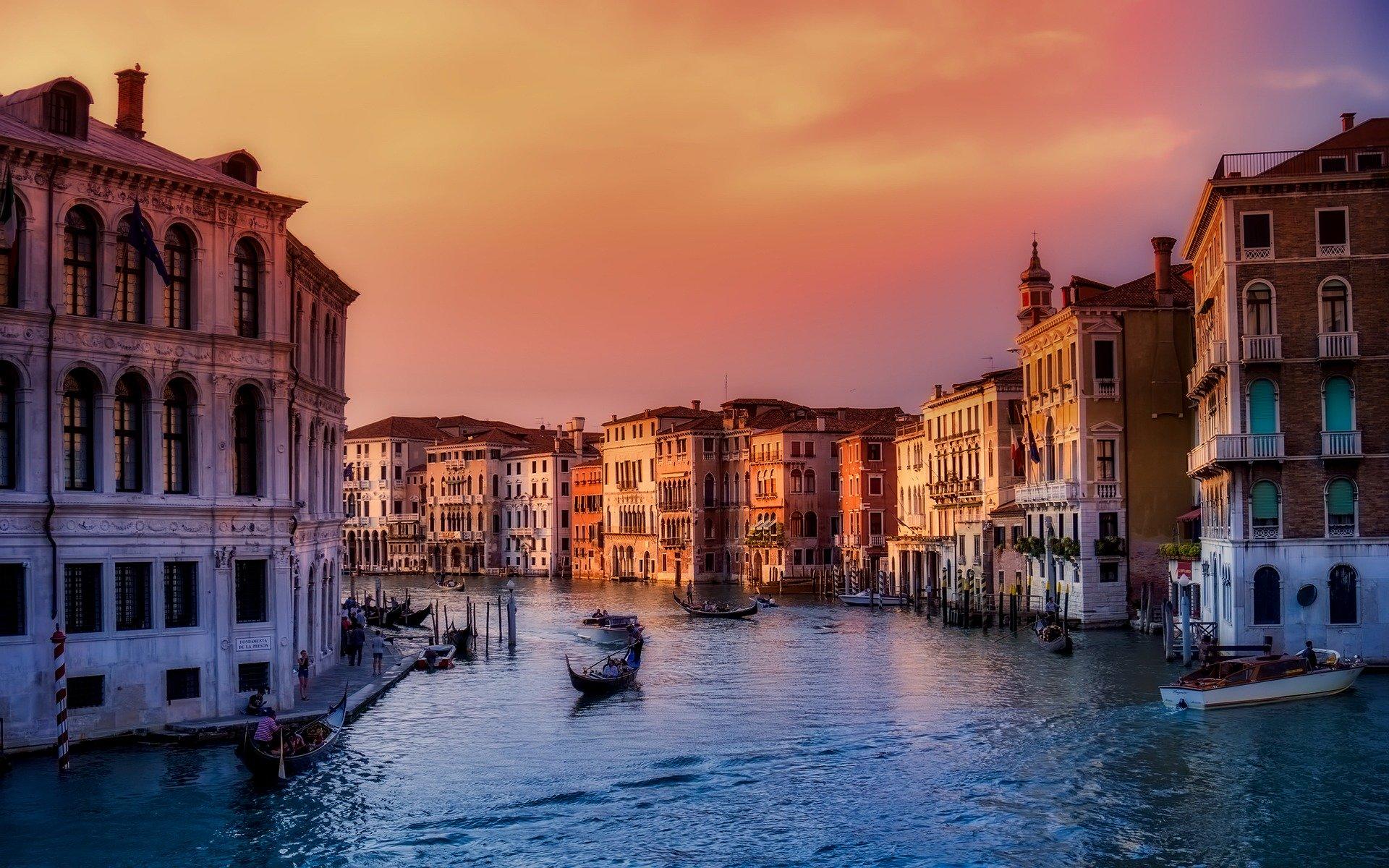The Royal Palace of Milan was the main centre of power in the region, and for a time the whole of Italy, and it can be found right in the Piazza del Duomo (internal link). This illustrious space houses a vast art museum with over 1,500 works from the most prestigious institutions around the world. It also reveals traces of the various courts that were once established here: the Savoy, Hapsburg and even Napoleonic courts. In fact, Napoleon is the subject of a fresco entitled The Apotheosis of Napoleon, King of Italy, an example of Napoleonic political publicity that can be admired in one of the palace’s most exceptional spaces, the Hall of the Caryatids.
The Palazzo Reale in Milan has beautifully decorated rooms with an emphasis on balance and the elegance of Neoclassical architecture. Piermarini, the architect responsible for refurbishing the building in 1769, was also behind the Teatro alla Scala (internal link). The beauty and sumptuous decoration of the palace ensure it more than earns its place in Piazza del Duomo of Milan, where the bar is set so high.
Museums and rooms in the Royal Palace of Milan
The Royal Palace is Milan’s leading museum and the most important in the region. It contains over 1,500 pieces of huge value from different periods. The palace also holds temporary exhibitions with works on loan from other exclusive international institutions. You’ll see everything from the Impressionism of Monet to works by Leonardo da Vinci and Abstraction by Kandinsky and Picasso. In fact, the museum has such a variety of works that it even puts on fashion and design exhibitions.
The museum’s itinerary is set out according to the changing political times that the Royal Palace of Milan withstood. It starts with the period of Maria Theresa, Archduchess of Austria and Empress Consort. Maria Teresa was one of history’s most influential and powerful women and she introduced a wealth of Baroque decoration into the palace. Mother of Marie Antoinette, the last queen of France who was tragically beheaded at the dawn of the French Revolution, Maria Theresa governed her domains from the Palazzo Reale and firmly left her mark on it.
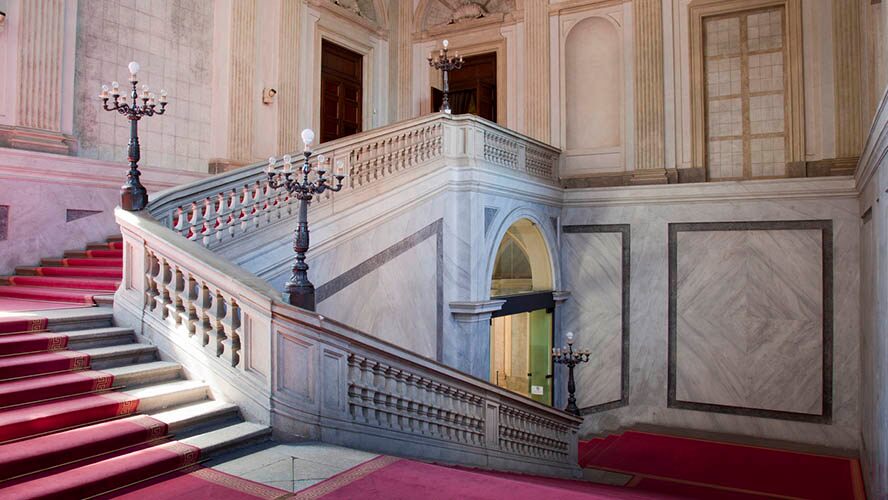
Echoes of the far-off revolution even reached the Royal Palace of Milan: when Napoleon made continental Europe his empire, Milan became part of it. The typical luxury of Republican Napoleon was also noted here in the Palazzo Reale where he lived. A fresco was dedicated to him in the Hall of the Caryatids, one of the few original works to have survived the 1943 bombing of Milan. The Royal Palace later passed through a period known as the Concert of Europe: after Napoleon’s defeat, the royal houses and European powers established the continent’s new borders. Finally, the museum has a further space dedicated to the unification of Italy and the history of the palace from this date onwards.
The numerous halls and rooms in the Palazzo Reale of Milan evoke periods of unimaginable splendour, of receptions and balls, of great dynasties and courtiers. Rooms of particular note at the museum include:
- Hall of the Caryatids: in 1745, famous architect Francesco Croce, who was working on the Duomo, was commissioned to join the room used for dances to the reception hall to create a 46 m by 17 m ballroom. This large space was decorated with exquisite frescoes and great luxury. The caryatid statues are particularly important and function as pillars that seem to support the ceiling of the huge room.
- Tapestry Hall: this room contains works inspired by the famous Gobelins Manufactory in Paris, for centuries the production centre of the world’s most luxurious tapestries. Over time, the various lords of the palace succeeded in forming a magnificent collection
The Palazzo Reale, a long history of power in Milan
From the Middle Ages onwards, the region was governed from the Royal Palace of Milan. At the time, medieval communal societies joined by pacts made decisions from its estates. Later, the Visconti, Torriani and Sforza families became the most powerful in the region and made it their centre of power. The palace was completely refurbished under the Sforza to ensure it matched the neighbouring Cathedral of Milan in splendour and greatness.
When the Sforza’s reign ended, the Royal Palace of Milan became a court under the crown of France. Towards the end of the 16th century, Pellegrino Tibaldi, the architect who was working on the Duomo, was one of many architects who continued with its renovation work. Among the surprising changes that the palace underwent was one commissioned by its benefactor, governor Gonzaga, who demolished the neighbouring church, San Andre al Muro Rotto, to expand its land. He also connected the palace to another nearby church, San Gottardo, with a passageway.
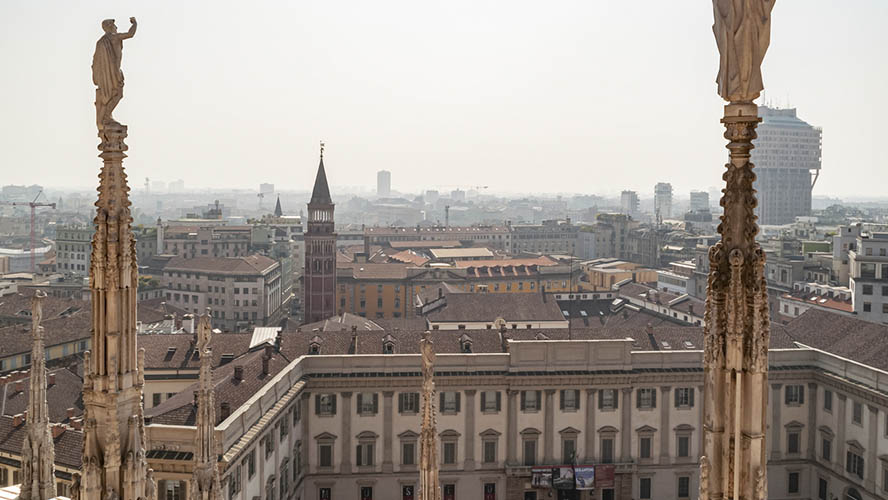
The Royal Palace was later renovated by Piermarini following several fires. He defined the buildings predominant Neoclassical style, according to the preferences of Ferdinand Karl, Archduke of Austria-Este, son of Maria Theresa. A year earlier the palace was on the brink of welcoming Mozart, who was due to conduct an opera there, but Empress Consort Maria Theresa wouldn’t consent to the genius composer’s visit.
Useful information:
Entry:
Check up-to-date ticket prices on the official website. Discounts are available for children between 6 and 14 years of age. Under-6s are free. Tickets are also available that give you entry to several museums across Lombardy at a reduced price.
Opening times:
- Monday: from 2.30 p.m. onwards.
- Tuesday to Friday: from 9.30 a.m. to 7.30 p.m.
- Saturdays: from 9.30 a.m. to 10.30 p.m.
- Sunday: from 9.30 a.m. to 7.30 p.m.
How to get there:
- By bus. Route 54, Piazza del Duomo stop.
- By metro. Duomo stop, on the yellow line.
Useful links:
https://www.milanturismo.com/palacio-real/
http://www.turismo.milano.it/wps/portal/tur/es/arteecultura/musei/palazzo_reale




































































